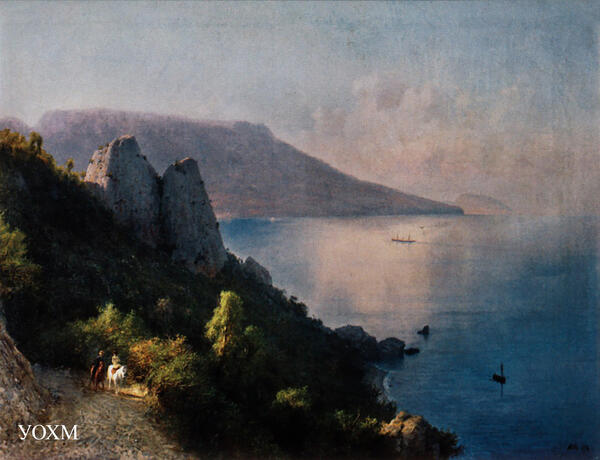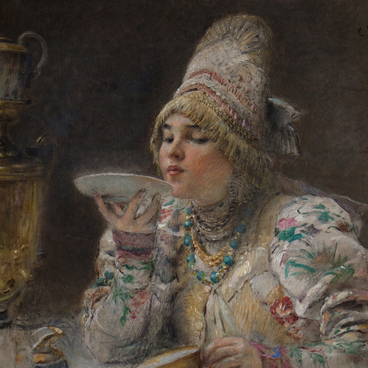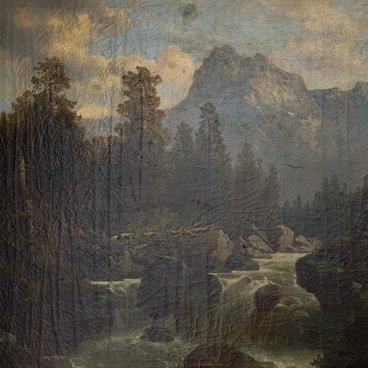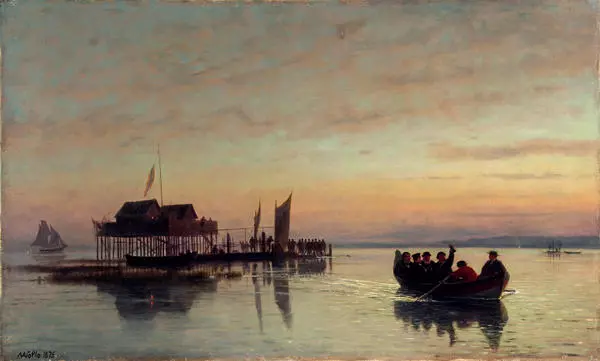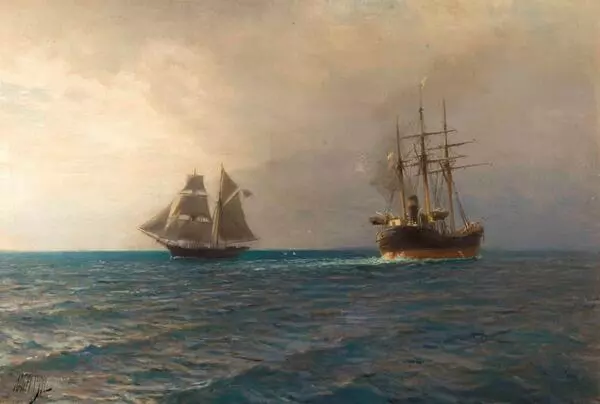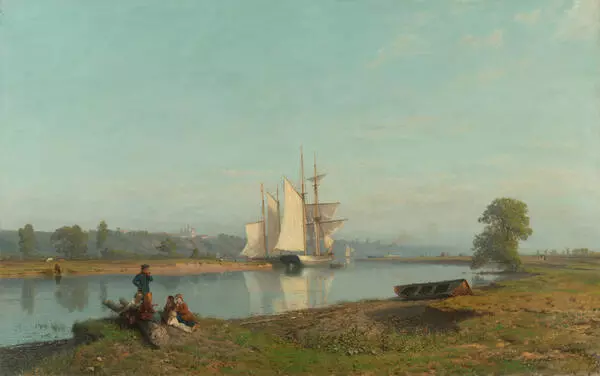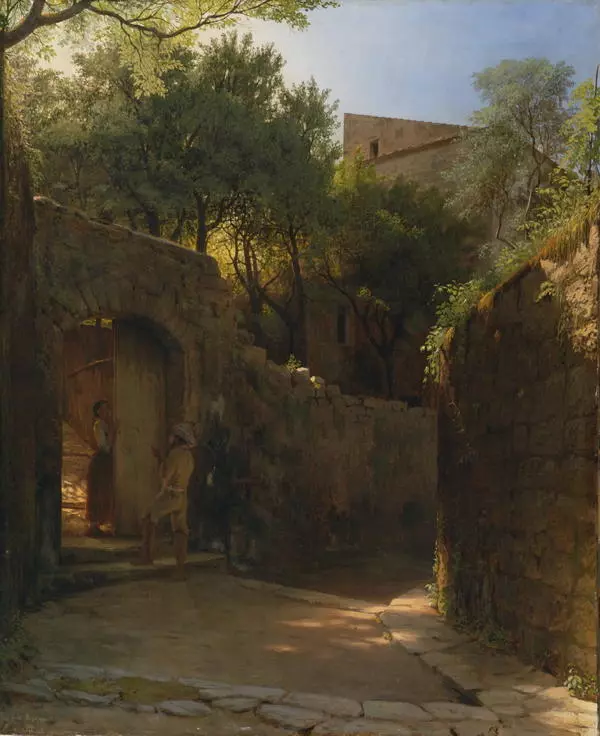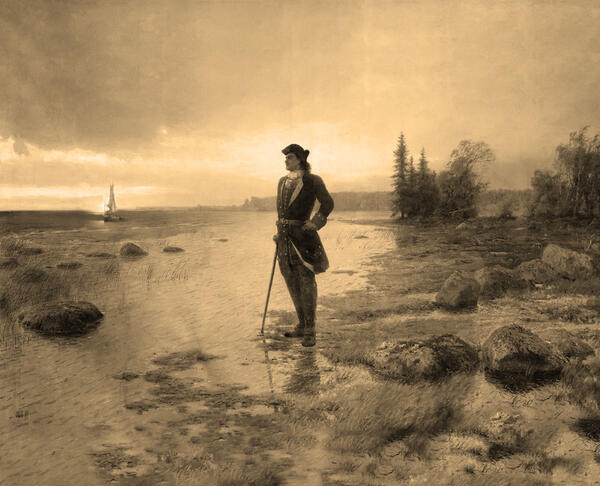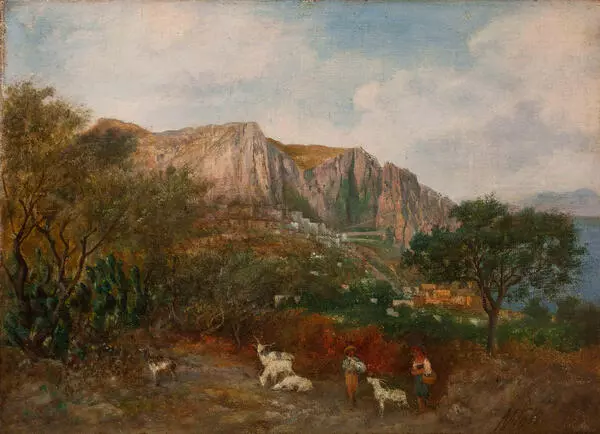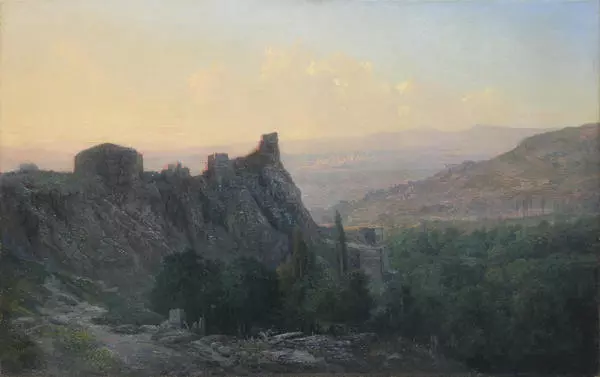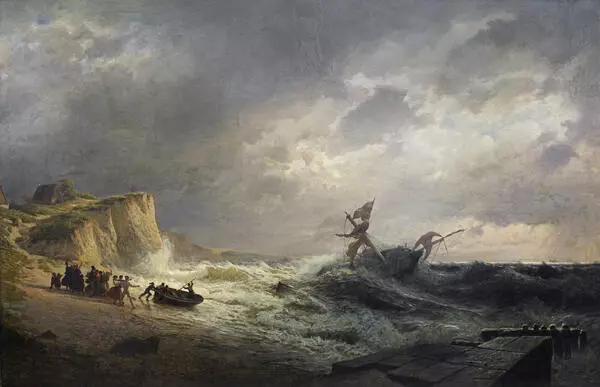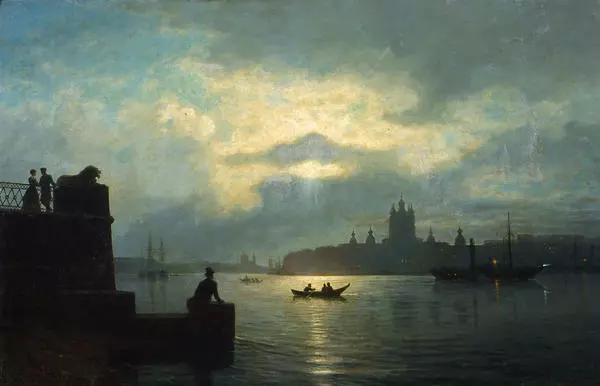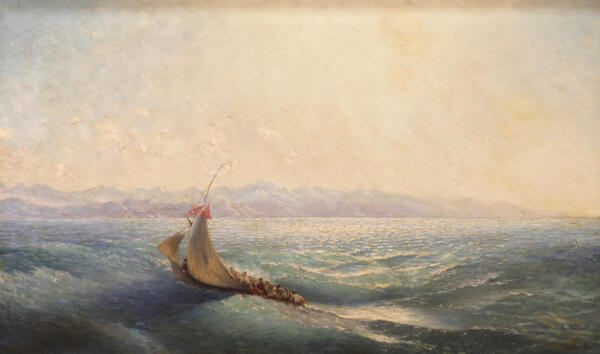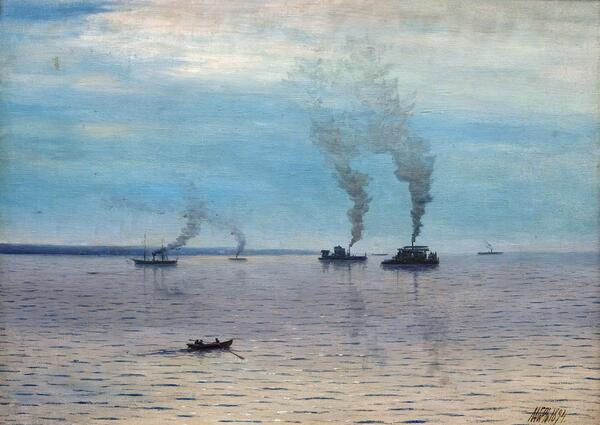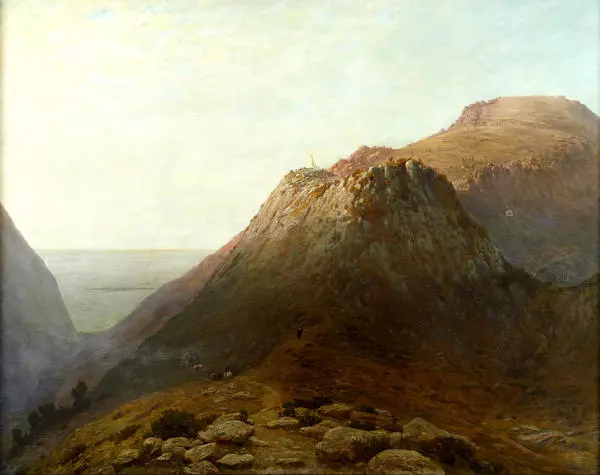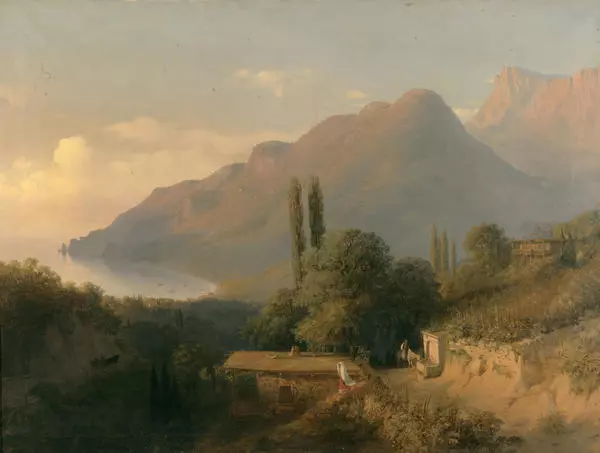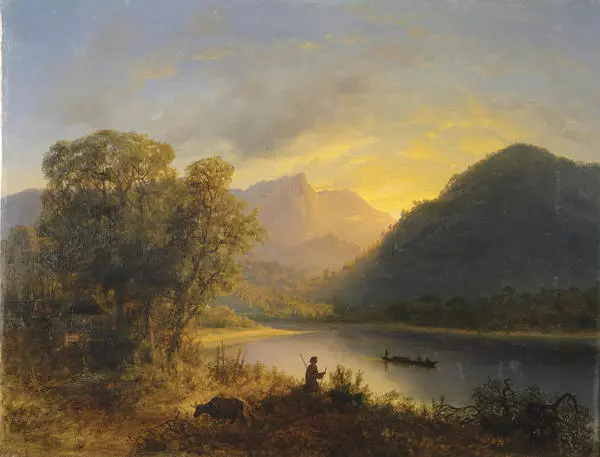Lev Feliksovitch Lagorio was a Russian seascape painter. He came from the same town as Ivan Konstantinovich Aivazovsky and was the latter’s first student. Lev Lagorio belonged to the Crimean regional school of painting. The artist was born on the coast of the Black Sea, in Feodosia, into the family of an Italian general from a noble Genoese family, who had left the army of Napoleon Bonaparte after falling in love with a young Russian woman. Lev took up drawing quite early and while attending a gymnasium, he studied at the Feodosia workshop of Ivan Aivazovsky from the age of 11. When he was 15, Lagorio entered the Imperial Academy of Arts in Saint Petersburg. The tuition costs were covered by Duke Maximilian of Leuchtenberg, the appointed President of the Academy.
The sea was the main theme and source of inspiration in the works of Lev Lagorio. During his studies, the artist traveled on the navy frigate “Grozyashchiy” and visited the Gulf of Finland in his own sailboat making many sketches from nature. For many years Lagorio traveled around the Caucasus, he studied fine arts in Rome and Paris, and opened a workshop in Sudak. The sea in his paintings was always different — it could be depicted at night or at dawn, it looked stormy, tranquil, gloomy or bright. Like his teacher Ivan Aivazovsky, Lagorio was a professional battle painter and visited battlefields for a series of works on the Russian–Turkish war.
Lagorio’s works are realistic — they vividly illustrate a broad variety of subjects: the environs of Rome, the Caucasian gorges, naval battles and shipwrecks, Norwegian fjords, the snow-covered Saint Petersburg, and the storming of fortresses. Lagorio received Gold and Silver medals from the Academy of Arts, as well as the Order of Saint Anna of the 3rd class from Emperor Alexander II.
Lev Lagorio painted Yalta dozens of times, this was one of the artist’s favorite subjects, which he addressed at different periods of his life. Lagorio’s paintings shared several common features: the landscapes were often set under the midday sun, the artist preferred the frontal composition, clean outlines and a loose manner of painting. Lagorio’s brushstroke was often called “velvet” for its smooth transition from one shade to another.
The works of Lev Feliksovitch Lagorio are a valuable asset of the Ulyanovsk Regional Art Museum. The paintings used to belong to Vladimir Nikolaevich Polivanov — a distinguished cultural and public figure. In 1918, the collection was nationalized and became part of the Ulyanovsk Art Museum.
The sea was the main theme and source of inspiration in the works of Lev Lagorio. During his studies, the artist traveled on the navy frigate “Grozyashchiy” and visited the Gulf of Finland in his own sailboat making many sketches from nature. For many years Lagorio traveled around the Caucasus, he studied fine arts in Rome and Paris, and opened a workshop in Sudak. The sea in his paintings was always different — it could be depicted at night or at dawn, it looked stormy, tranquil, gloomy or bright. Like his teacher Ivan Aivazovsky, Lagorio was a professional battle painter and visited battlefields for a series of works on the Russian–Turkish war.
Lagorio’s works are realistic — they vividly illustrate a broad variety of subjects: the environs of Rome, the Caucasian gorges, naval battles and shipwrecks, Norwegian fjords, the snow-covered Saint Petersburg, and the storming of fortresses. Lagorio received Gold and Silver medals from the Academy of Arts, as well as the Order of Saint Anna of the 3rd class from Emperor Alexander II.
Lev Lagorio painted Yalta dozens of times, this was one of the artist’s favorite subjects, which he addressed at different periods of his life. Lagorio’s paintings shared several common features: the landscapes were often set under the midday sun, the artist preferred the frontal composition, clean outlines and a loose manner of painting. Lagorio’s brushstroke was often called “velvet” for its smooth transition from one shade to another.
The works of Lev Feliksovitch Lagorio are a valuable asset of the Ulyanovsk Regional Art Museum. The paintings used to belong to Vladimir Nikolaevich Polivanov — a distinguished cultural and public figure. In 1918, the collection was nationalized and became part of the Ulyanovsk Art Museum.

